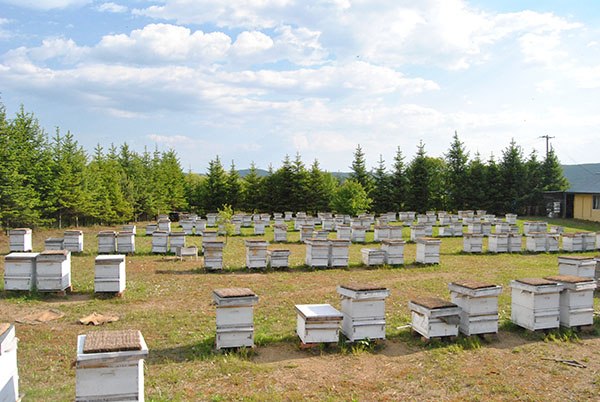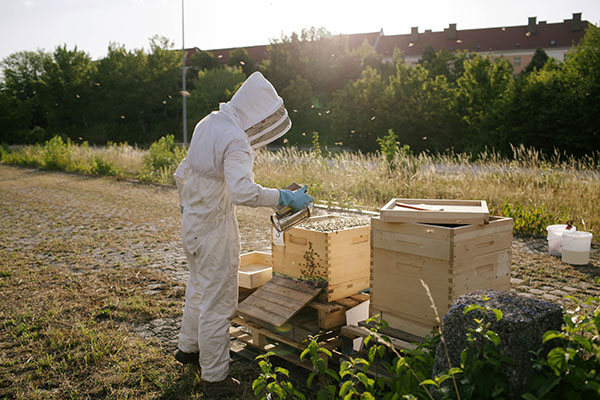What to do if the hive colony is wet and why does it happen?
 Sep 15,2022
Sep 15,2022

 Lucia Ma
Lucia Ma
We all know that the hive must maintain a normal temperature and humidity to reproduce normally, but the hive is easily affected by the outside world, especially in high temperature, dry or wet and cold seasons, the temperature and humidity of the hive will be abnormal. In order for bees to regulate the temperature and humidity of the hive and ensure the normal development of larvae, fan is an essential work. When the temperature of the honeycomb is too high in a hot climate, the fan can enhance the air circulation and take away the heat to cool down. When the humidity of the honeycomb is too high, the fan can also remove the humidity and maintain the normal humidity.

The moisture in the beehive comes from the wet ground, air and fog, as well as the moisture generated by the metabolism of the bee colony. If there is too much moisture in winter, freezing damage may occur. Therefore, once excessive moisture is found, measures should be taken in time to prevent it. Let's take a look at the prevention and control measures of excessive moisture in the beehive colony.
Check bee colonies in early spring and late fall
Many people think that the nest door is closed in autumn, and even if the autumn management is completed, the box cannot be opened for inspection when it is cold. In fact, it is a wrong approach. Unpacking and inspection does not hurt the bees, and because the bee colony is below, the bee colony should be inspected, once in autumn and spring, and especially after the cold. Check to see if there is a problem of excessive moisture. Once found, measures should be taken in time, otherwise it will be too late, which may cause freezing damage to the bee colony.
Beehive drilling
Drilling is an old solution to the moisture problem. Drill a hole in the upper part of the hive to allow moisture to escape. When the door of the hive is blocked by snow or water, this hole can be used by the bees to fly out of the box to defecate. The disadvantage of drilling is that cold air can enter the beehive. During winter, beekeepers tend to seal the beehive as tightly as possible. It is wrong to drill holes in the upper part of the beehive like this. Now, beekeepers are plugging the hole and looking for other solutions.

Use a retractable height beehive cover
The height of the box cover can be retracted, and two small pieces of wood are nailed to the top of the auxiliary cover. In autumn, beekeepers often turn the auxiliary cover over, so that the bees have more space for activities at the top of the hive. In this way, the two small pieces of wood form a ventilation hole, which can discharge the water vapor, and when the retractable box cover is pushed back, the water vapor is discharged, and it is not blocked.
Some beekeepers use insulated panels to reduce moisture. The insulation board is 1.3--1.9cm thick, also known as building board and fiberboard. Any fibrous material will do. Cut the fiberboard according to the inner circumference of the box, put the board on the top of the auxiliary cover, and support it with small wooden strips, so that it becomes a ventilation channel. Fiberboard has two advantages: one is that the cold air cannot directly enter the top of the sub-cover, so that the bottom of the sub-cover is warmer; the other is that there is basically no water under the sub-cover. The thermal insulation board can absorb and discharge the moisture, and the airflow takes the moisture away. The beehive should be raised 30cm high from the ground. The moisture problem of some beehives is that the beehive is placed too low and close to the ground. The minimum distance is to raise the beehive to a height of 30cm. After the beehive is set up, although it is inconvenient to manage the bee colony, it is worthwhile to ensure the health of the bee colony.




 Tel:
Tel:

 Home
Home What should be paid attention to in bee keeping? beekeeper tell you
What should be paid attention to in bee keeping? beekeeper tell you  You May Also Like
You May Also Like







 Tel
Tel
 Email
Email
 Address
Address







